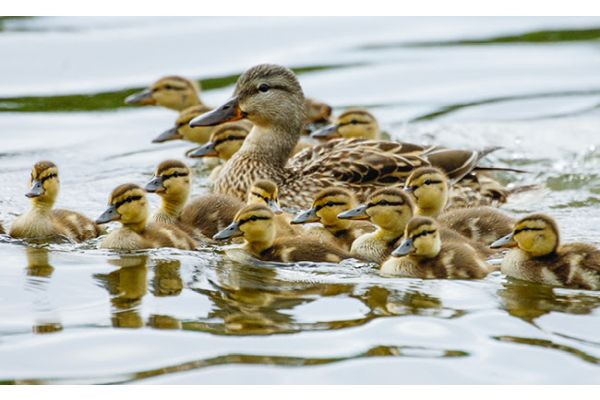North Dakota Breeding Waterfowl Survey Shows Drier Wetland Conditions, Fewer Ducks

North Dakota Game and Fish reports a 26% drop in mallards, while teal and pintail numbers also fell significantly
BISMARCK, NORTH DAKOTA — The number of breeding ducks declined again this spring in North Dakota, the most important state for mid-continental duck populations.
During its annual survey, the North Dakota Game and Fish Department estimates 2.66 million breeding ducks, a 9% decrease from last year. Notably, mallards, pintails, and blue-winged teal were down “significantly” in May when the survey was conducted.
“Things are continuing to decline a little bit as far as duck populations go,” said Mike Szymanski, migratory game bird supervisor for NDGF. “The mallard population estimate was down 26% from last year and is the lowest estimated mallard breeding population on our survey since 1993. Blue-winged teal, green-winged teal, and pintails also had significant population declines, whereas the declines for gadwall, shovelers, and ruddy ducks were not as significant. We did have a few species—wigeon, canvasbacks, redheads, and lesser scaup—that showed increases from last year on our survey.”
NDGF conducted the survey May 6-9, covering more than 1,800 miles of transects. The pond count was down 38% from last year. The 2025 pond count ranks 52nd out of the past 78 years.
“Conditions were pretty dry, and that affected how ducks settled in the state,” Szymanski said. “We had mallards and pintails migrating through in late March and early April encountering those dry conditions. Mallards and pintails are early migrating species. They’re early nesting species. They went through the state when we had very poor wetland conditions. Settling conditions were not good for them so we may have had a lot of those birds go through into northern breeding areas.”
Since a wet spring in 2022 when the NDGF survey showed 3.4 million ducks, the breeding population has declined each year as drier conditions have persisted, not only in North Dakota, but across most of the prairie pothole region. The PPR, which encompasses the Dakotas, as well as portions of Montana, Iowa, and Minnesota in the United States, and southern Manitoba, Saskatchewan, and Alberta in Canada, accounts for more than half of the ducks produced in North America.
“The North Dakota survey is a disappointing result, but it’s not surprising given the dry winter we had,” said Dr. Frank Rohwer, president and chief scientist of Delta Waterfowl. “I think the same thing is going to be reflected in Saskatchewan and Alberta when the U.S. Fish and Wildlife Service releases the (continental) breeding population survey in August.”
North Dakota received a much-needed period of spring rain after the breeding duck survey was conducted, which improved wetland conditions across the state.
“I suspect the rains were too late to help anything except later-nesting species—blue-winged teal and gadwalls,” Rohwer said. “And now, the temporary ponds those late-May rains created are dry again. Duck production isn’t going to be great this year in North Dakota and across the PPR. I think it’s going to be worse than last year.”
Abundant upland nesting cover and better wetland conditions are necessary for duck populations to increase and provide better hunting.
“North Dakota is the duck factory of the United States and North America,” Szymanski said. “We have a lot of folks relying on us to produce ducks, not just our hunters here in North Dakota, but hunters all across the Central and Mississippi flyways. When we have poor production in North Dakota, other folks feel it as well. Unfortunately, the direction we’re going right now is smaller and smaller fall flights.”
Delta Waterfowl is The Duck Hunters Organization, a leading conservation group working to produce ducks and secure the future of waterfowl hunting in North America. Visit deltawaterfowl.org.
